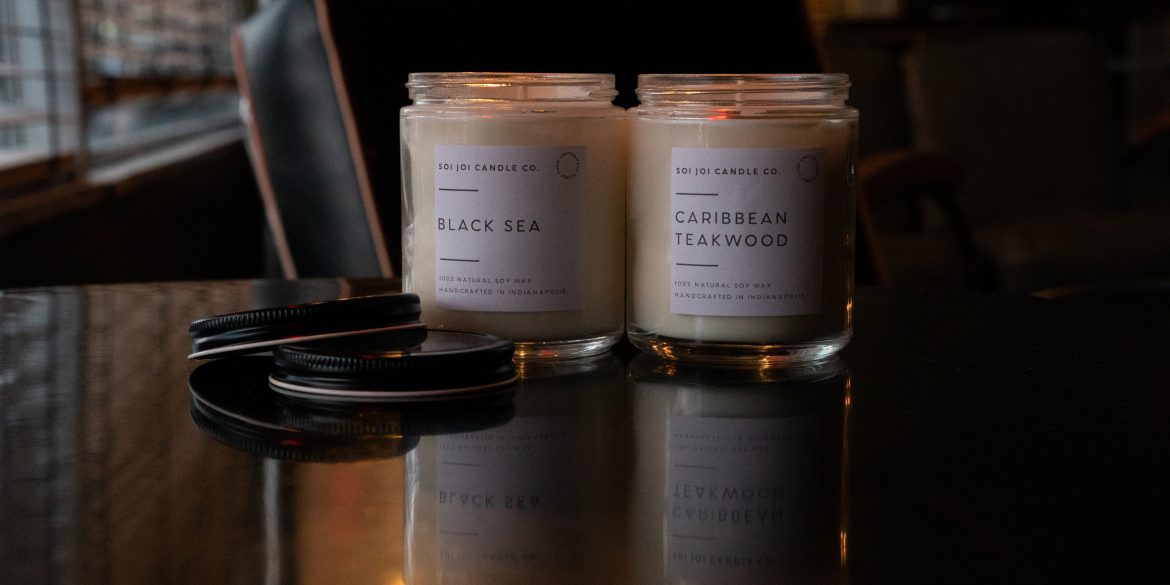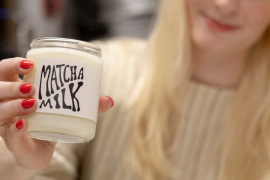Supporting local and small businesses is one of the best ways to make a difference in the community. Purchasing products from local makers supports their livelihood, keeps money in the city, and creates connections. We sat down with Joe Hamgeri, co-owner and co-maker of Soi Joi Candle Company, to find out how candles are hand poured and why he lives by supporting other local makers. Soi Joi candles are small batch soy candles that are eco-friendly and non-toxic. Lighting up these candles in any room will warm your senses with balanced, refined and cozy scents. Three scents are available currently online: Carribean Teakwood, Black Currant and Absinthe, and Black Sea. Three new holiday scents that Joe created will be launching this month. Check out their website and read on to stay updated with the latest scents.
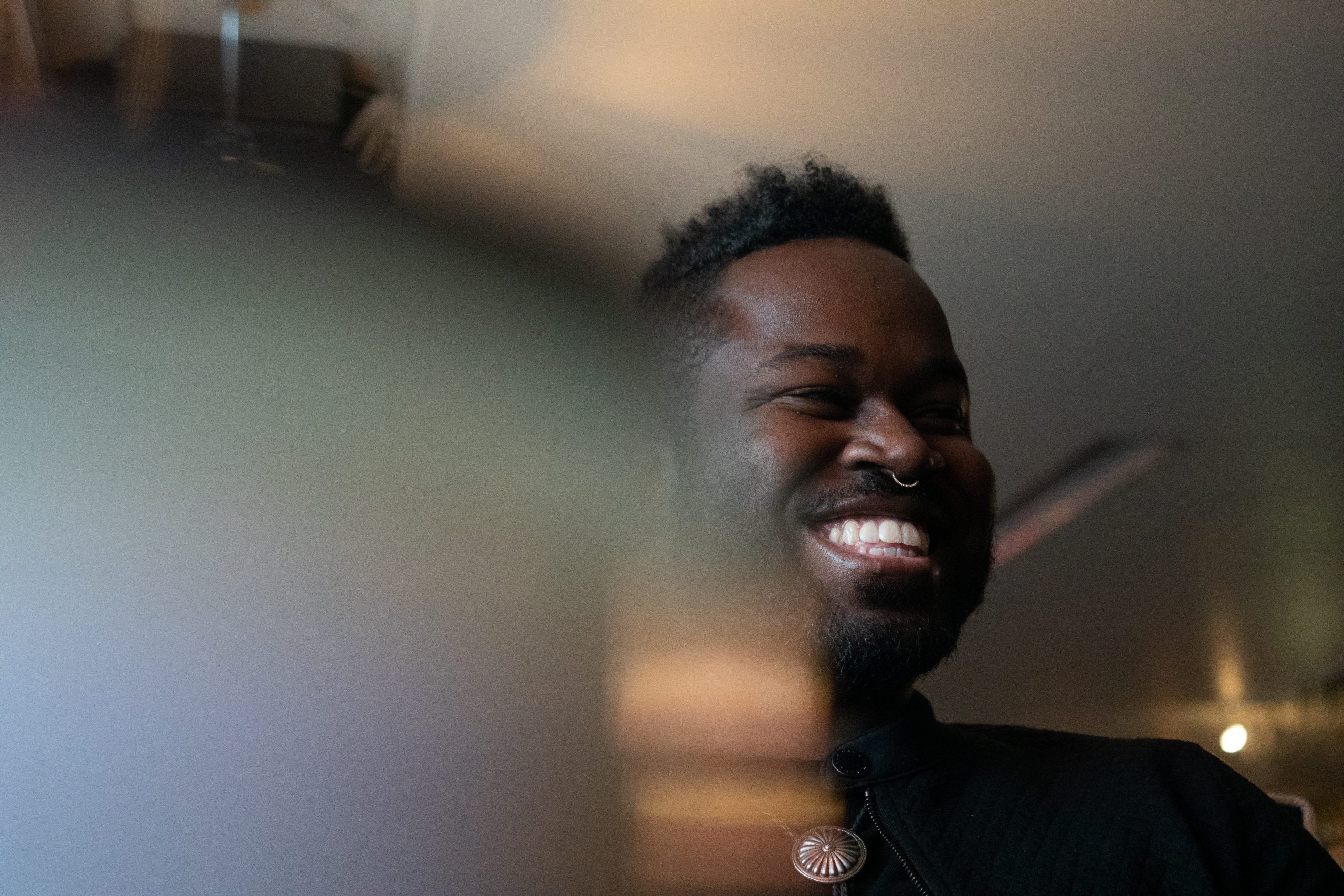
What piqued your initial interest in making your product?
I’ve always loved candles! Looking at them as they burn is kind of mesmerizing, and the scents are a nice addition to any room. What’s not to like? I would buy candles and burn them all the time, and of course they were always running out. One day I thought, “I want to have candles all the time. I want to have a shelf of candles.” Then, one day, I met Jake Baker, and he was already making candles. I wanted to buy a couple from him, but he said, “Well I can sell you the kit for making them.’” At first, I was like, “Well I don’t want to make candles, I just want to burn them,” but then he said, “Why don’t we form a company, and I will make candles with you… ” That’s how it started.
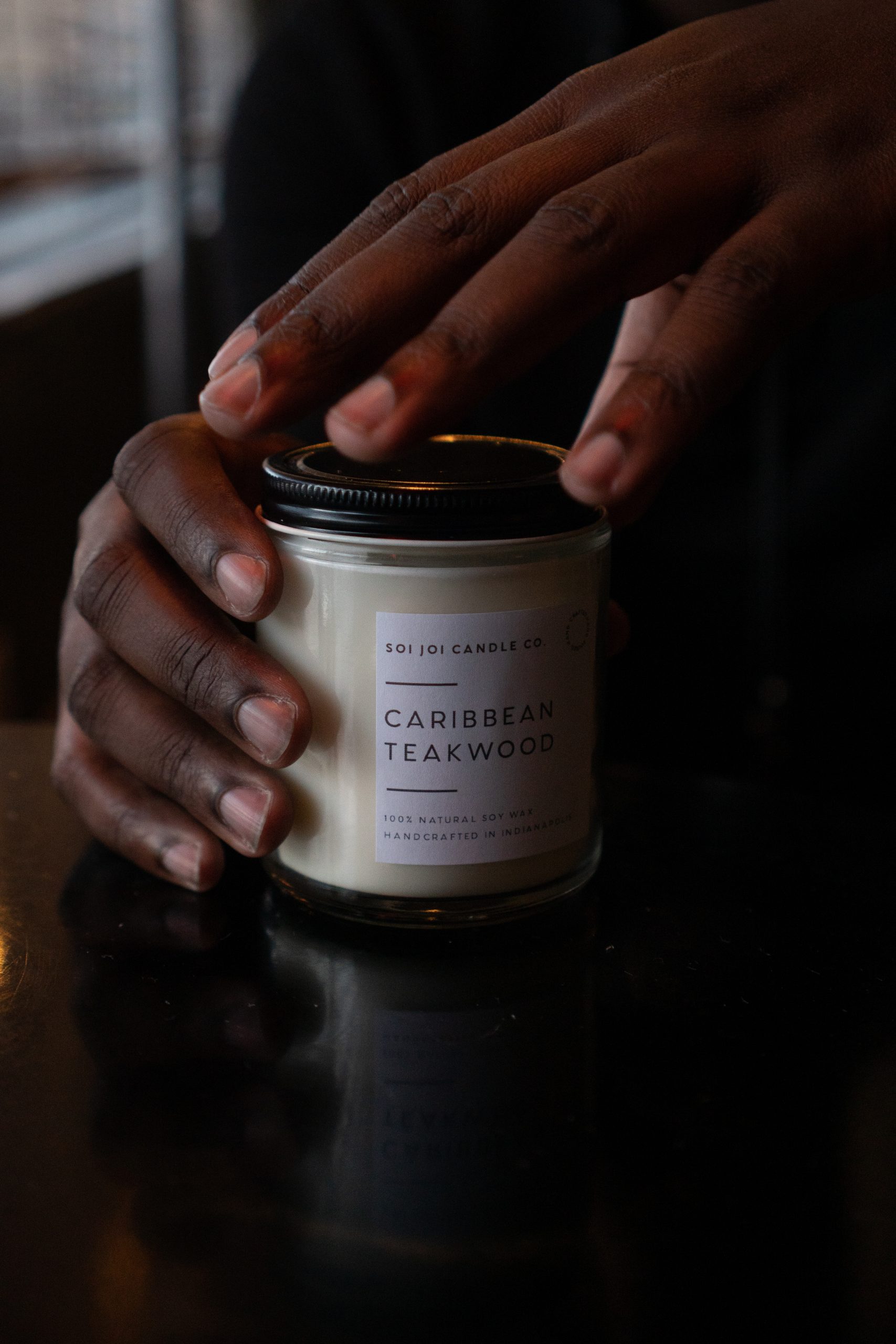
What principles do you use when making the candles?
There’s a couple routes you can go with making candles. For us, we want to be very environmentally conscious. In terms of packaging we only use paper. and our candles are made out of soy wax. There’s soy wax, beeswax, or paraffin wax. Paraffin wax is a synthetically made wax and it releases harmful chemicals into the air. We use wax that is made from soybeans and harvested in America. It’s not releasing those harmful chemicals into the air, into your room, into your space. That’s something that I am definitely not willing to negotiate on. The wick we use is an eco-friendly wick. You’ll notice that when you put the candle out and try to take out the part of the wick that’s been burned already it doesn’t come off as easily. That’s because of the style of wick that we are using. There’s a couple different kinds that you can use. The wick allows the candle to burn evenly. It isn’t made from synthetic materials. Our entire process is using products that are biodegradable, and that do not release harmful chemicals into the air.
Who or what influences your style? How would you describe your aesthetics and values?
I like balance. I like things that are smooth and look nice. I don’t like to use the word minimalism all the time, but I think people would use that word to describe the way the candle looks. It conveys comfort. That’s the vibe that I am going for with candles. The aesthetic is something that is pleasant, simple, yet enticing.
Can you describe the process of creation from start to finish? The creative process, material selection, and labor process?
My approach right now has been to release a couple candles at a time. I don’t want to have 60 different candles, because that feels overwhelming. First, we pick the profile of the scent that we want. Next we select the wax. We use a wax with a soy additive that allows the candle to burn more evenly and it also helps with frosting. Frosting is what will happen when a natural soy candle sets and it interacts with the air and creates this frosting on the glass. It’s not a bad thing, it’s just an aesthetic thing. Our candles have around 55 hours of burn time. I didn’t want our main candle to be very large or super small, so we found something that was in the middle. The glass jars are 8 ounces, and that’s a good size based on the feedback we’ve gotten from people. We’ll come out with different sizes eventually, but right now we are going with that size.
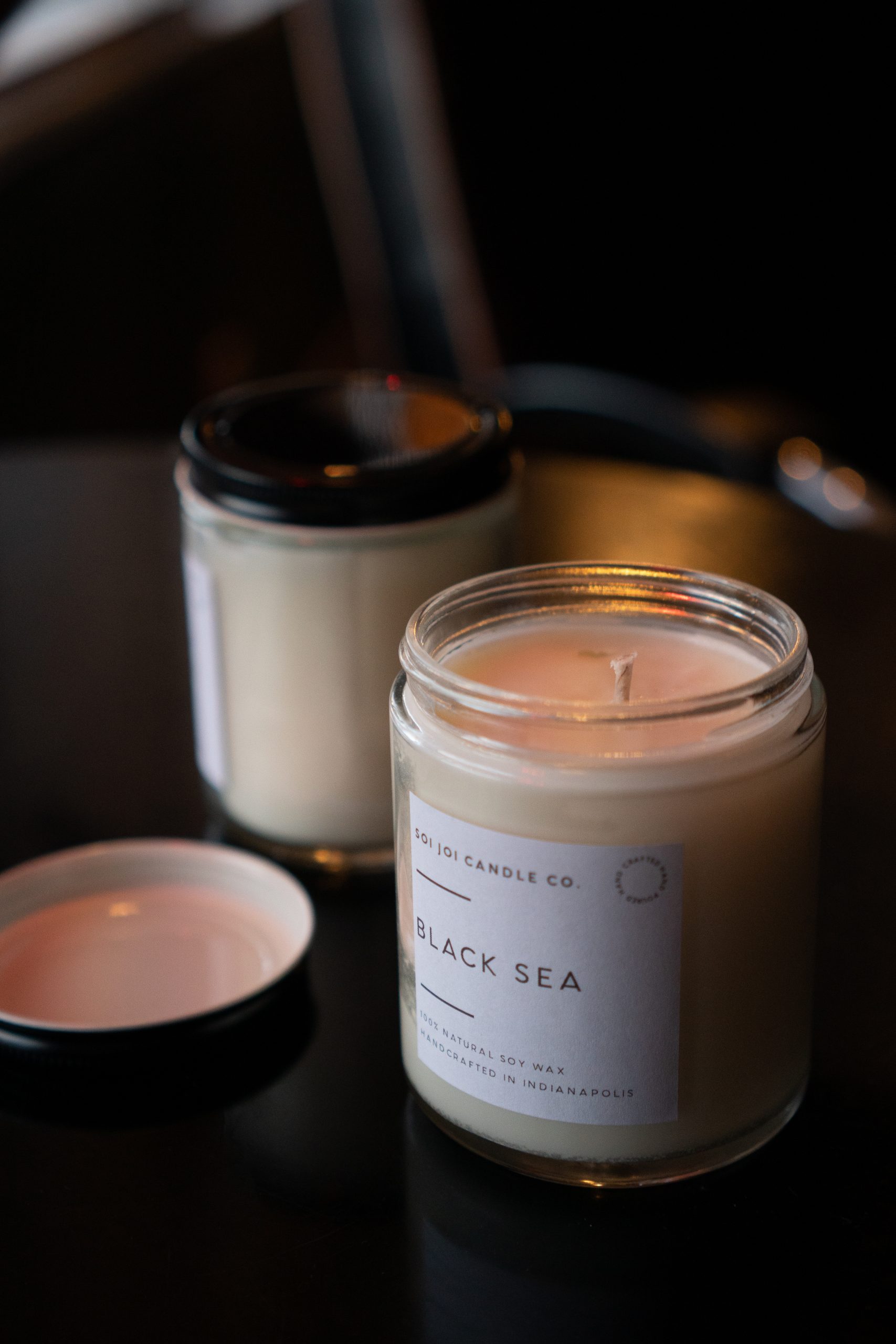
The process starts with melting the wax, then you wait for the wax to cool to a certain temperature. Once it cools to that temperature, you add the fragrance. There’s the mixing temp with the scent, and then there’s the pour temp after the wax is mixed. The temperature is important for adding the fragrance. It determines how well the scent will come through. The pour temp determines how well the wax sets. This can be tricky! We’ve definitely had some candles that we needed to fix. After you add the fragrance you want to pour the mixture into the jar at a different temperature. First you set the wick in the jar. You can set the wick with wax, but we use a type of glue that makes it set pretty quickly. Then you pour the wax. You need to keep the wick level – we use clothespins to keep it stable -or it might tilt to one side instead of being centered. The label goes on last, then the lid, and that’s it!
What is your favorite scent, why?
I’m going to have to go with two. I love the smell of berries, because they’re not a super sweet fruit but there is this pleasant fruity quality to it. There can be citrus hints, and I love citrus. Black raspberries are my favorite food, so that scent is definitely high up there. I also love mild woods like maple and birch. I love the smell of those, because they are sort of a connection to the earth. As a human, you’re drawn to those kinds of smells.
Describe something you’ve created that you’re most proud of. What was special about it?
For this winter collection we are doing a little bit of blending scents. It can be difficult to arrive at what you want, while being able to document the process well enough so you can make it again. So for the winter collection, I am really excited for all three of them. One of them is vanilla. It’ll be called The Vanilla Situation. It’s vanilla and spice. I wouldn’t say the candle making process is easy or that it is super difficult, but there is a balance of achieving what you want to achieve as far as the look of it and the smell of the candle. I’m pretty proud of where those are for us. To see people order a candle, have it, post about it, talk about it and say, “Hey this is great, I love this smell. It’s sitting in our living room,” is cool. It’s nice to see something you’ve made actually translate to someone else.

What advice would you give to aspiring makers?
Think about why you want to do what you’re doing. Hopefully it comes from a place of inspiration. Hopefully it’s something that will fuel you to keep doing what you’re doing. I think that’s important. If you’re into making candles, you’re gonna be making a fair amount of candles. You need something to fuel you to continue doing that. The next thing is thinking about what makes your product unique. It doesn’t have to be something you make up. For me it is what we’re committed to as far as environmentalism. I’m not going to make something that could be cool, but it uses plastics. I want it to be plastic free. That’s something I’ve decided. Thinking about your non-negotiables, and what your plan is for being able to stick to that. I think logistics are important. Asking questions like: How are we going to package and ship it? How often are we going to make it? How are we going to market it? What happens if a lot of orders start coming in? Those things are going to come into play. The last thing I would say is staying open-minded. Things are probably not going to go exactly as planned, and that’s okay! I’ve gotten feedback from people who love certain scents and I know they aren’t for me, but if I was closed to that I would never look into what people are looking for. Ultimately, it’s important to get feedback from customers. Taking your time to create something and not feeling too pressured is important. Don’t try to force things – allow yourself the time to explore. One last thing: have fun! I’m having so much fun with these candles!

What is one thing the creative and design community can do in Indianapolis to help grow an audience for custom or hand crafted work?
I think there’s a couple things. One, I think this is great. This Q+A. We need more people talking about what they’re doing as far as making products. We need people talking about it so other people know about it. I think if you’re making something that you’re proud of and you like it, other people are going to be excited about it too. I think it’s easy to go to places that maybe we are familiar with like Yankee Candle and buy a candle or a gift and be done with it. When you buy something from someone who is living in the city that you bought it in, you’re contributing more directly to that person’s livelihood than you possibly could if you went to a Yankee Candle. I think we need people talking about it. We need people promoting their own stuff and sharing their own stuff. We need the public to think about where their dollar is going. The other thing I think is really rewarding when you buy local, or shop local, or dine local, is you make a connection with someone. You make a connection with a person. There is something special about that connection that you cannot replicate. That connection can’t really exist in a national chain.

